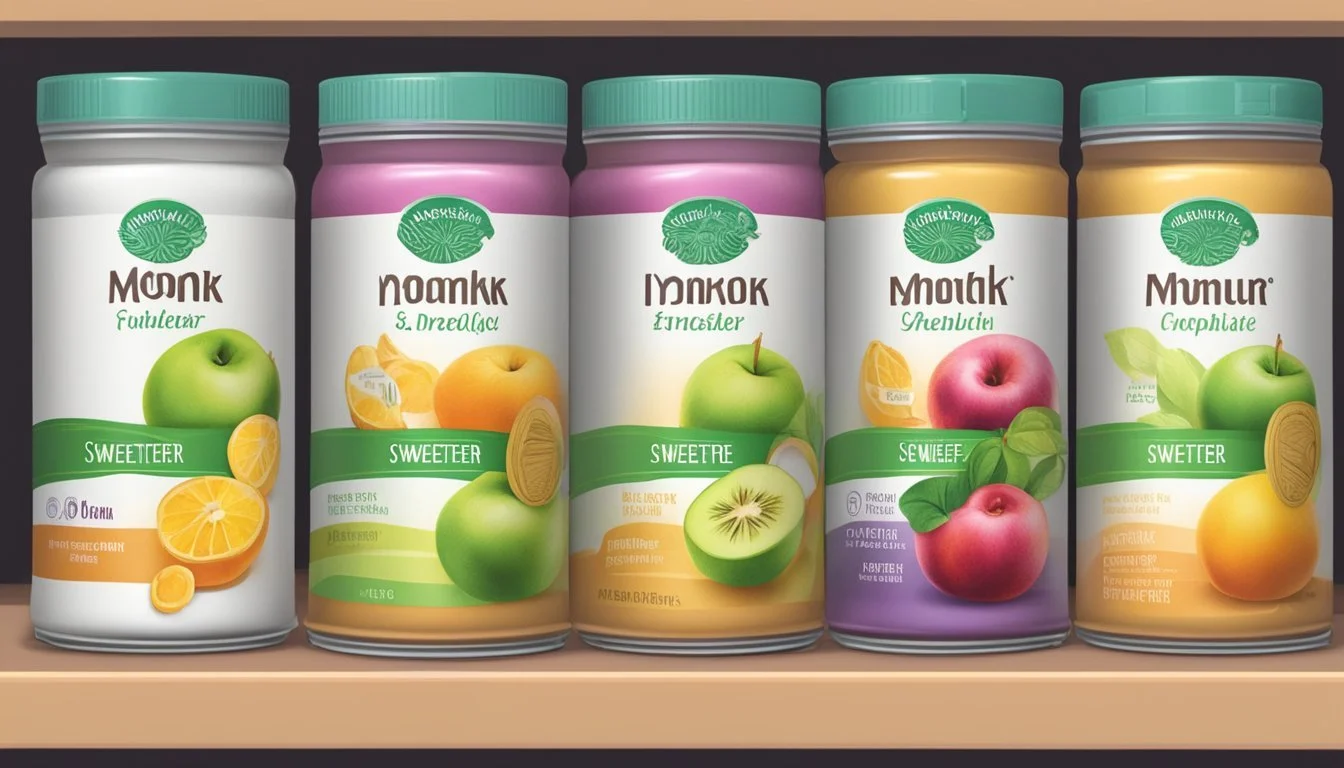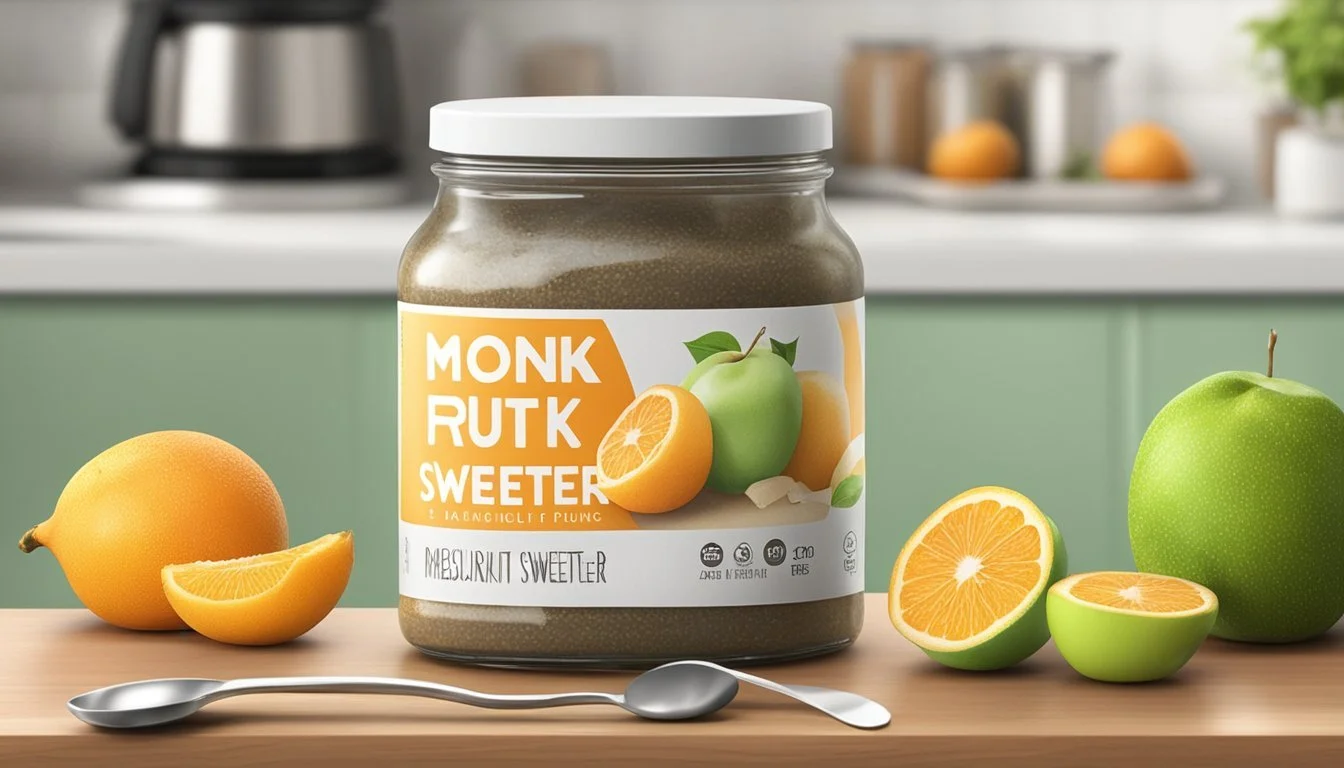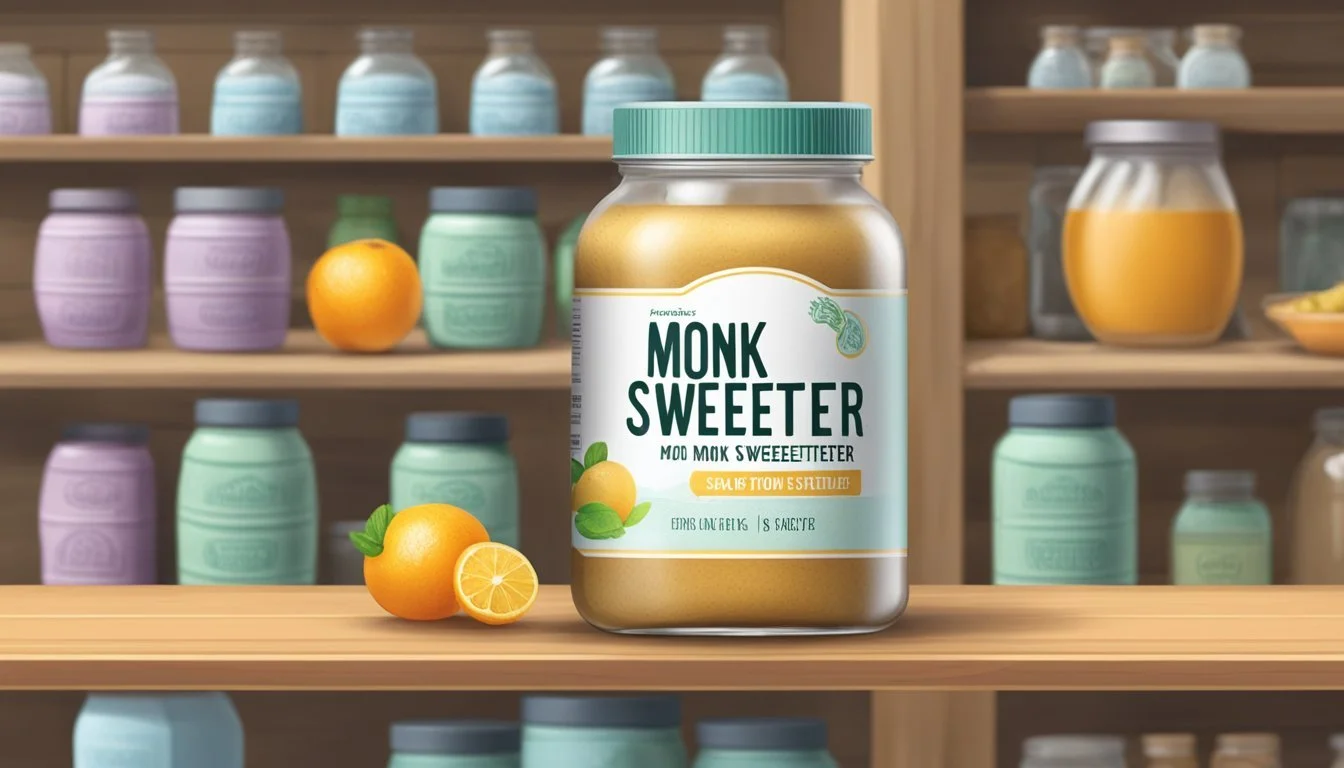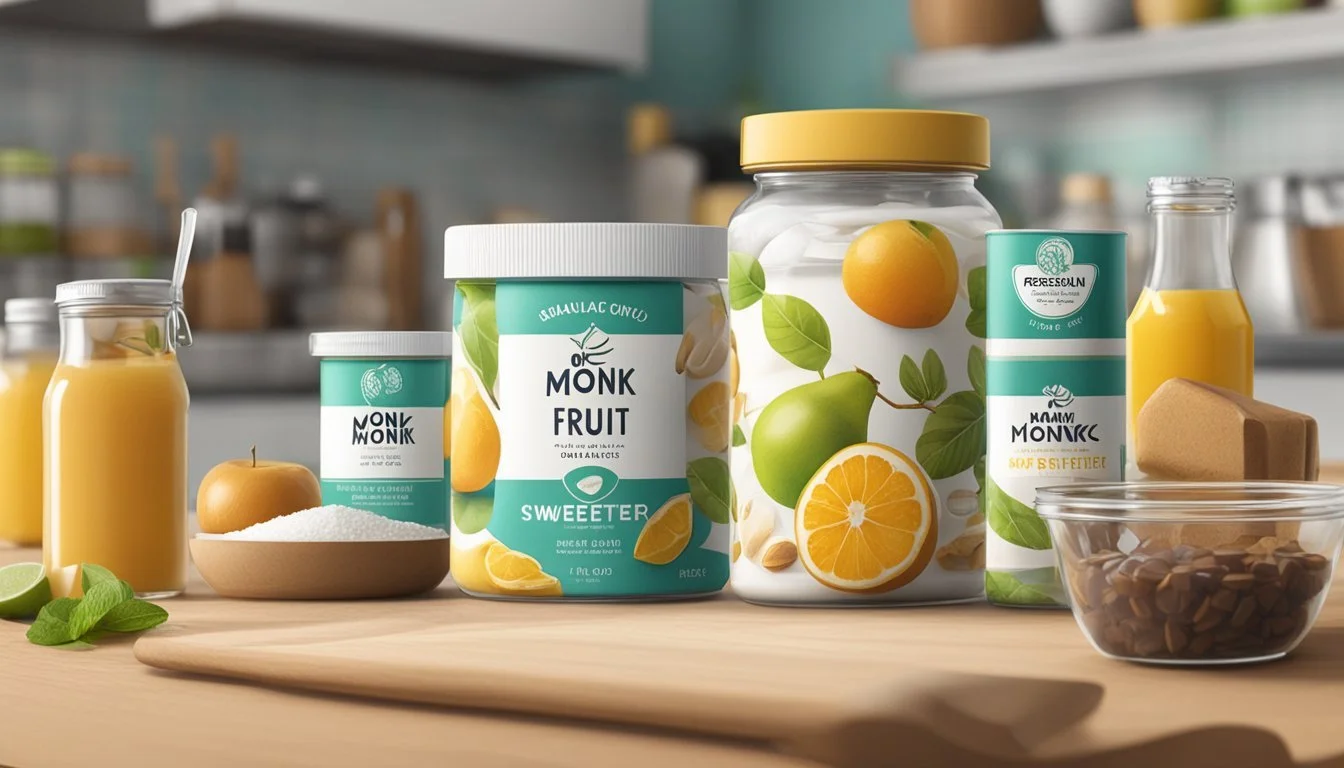Does Monk Fruit Sweetener Go Bad?
Shelf Life and Storage Tips
Monk fruit sweetener is a popular natural, zero-calorie alternative to sugar, praised for its high sweetness derived from unique antioxidants called mogrosides. As with any food product, a common question arises: Does monk fruit sweetener go bad? While monk fruit sweetener usually remains safe to consume after its expiration date, its taste and sweetness might diminish.
Proper storage is essential to maintain its quality. Signs of spoilage include clumping, an unusual smell, or discoloration. The U.S. Food and Drug Administration (FDA) has recognized monk fruit sweetener as generally safe (GRAS), adding to its appeal as a sugar substitute in various recipes and beverages.
By understanding the longevity and storage tips for monk fruit sweetener, consumers can make the most of this versatile, health-conscious sweetener in their daily diet.
Understanding Monk Fruit Sweetener
Monk fruit sweetener is derived from a small green fruit native to southern China, known for its unique sweetness. This natural, zero-calorie sweetener offers various health benefits such as antioxidant properties and the potential to aid in weight management.
Origin and History
Monk fruit, also known as luo han guo, has been used for centuries in traditional Chinese medicine. The fruit is named after the monks who cultivated it in the mountainous regions of southern China. Initially, it was used for its medicinal properties, including its ability to soothe sore throats and reduce fever. Modern interest in monk fruit sweetener began in the 20th century, especially as a natural alternative to sugar and artificial sweeteners.
Extraction and Production Process
The process of creating monk fruit sweetener involves several steps. Initially, the fruit is harvested and dried. The dried fruit is then crushed to extract its juice. Manufacturers then extract the mogrosides, the primary compounds responsible for the fruit's sweetness. These mogrosides can be 100-250 times sweeter than regular sugar. The extract is then purified and often blended with other ingredients, like erythritol, to make it more suitable for use in food and beverages.
Health Benefits and Nutritional Profile
Monk fruit sweetener has no calories, making it a popular option for those looking to manage their weight. It has a minimal effect on blood sugar levels, making it suitable for people with diabetes. The sweetener contains antioxidants known as mogrosides, which have anti-inflammatory properties. This adds to its appeal as a health-conscious choice. Unlike artificial sweeteners, monk fruit sweetener has no known side effects, making it a safe option for most people.
By understanding monk fruit sweetener's natural origins, how it's produced, and its health benefits, consumers can make an informed choice about incorporating it into their diets.
Shelf Life and Storage
Monk fruit sweetener is known for its capacity to last for a significant time when stored properly. Factors like moisture, temperature, and packaging play a fundamental role in maintaining its durability.
Proper Storage Conditions
Monk fruit sweetener should be stored in a cool, dry place. The ideal temperature for storage ranges from 50-70°F (10-21°C). Avoid exposing the sweetener to direct sunlight or placing it near heat sources as this can degrade its quality.
Using airtight packaging helps by preventing moisture and air from entering, which could otherwise lead to spoilage. Maintaining proper humidity levels between 60-70% is also essential to keep it fresh and clump-free. This storage method ensures that the shelf life extends to its maximum potential.
Identifying Signs of Spoilage
Detecting spoilage is crucial for maintaining product quality. One of the primary indicators that monk fruit sweetener has gone bad is clumping or changes in texture, often caused by exposure to moisture.
Any off-putting odor or unusual color changes should also be considered signs of spoilage. Additionally, the appearance of mold indicates that the sweetener is no longer safe to use. Regularly checking for these signs ensures that the product remains in optimal condition.
Extending Shelf Life Through Preservation
To further extend the shelf life of monk fruit sweetener, certain preservation techniques can be employed. Freezing is a viable option as it halts microbial growth and prevents moisture absorption.
When freezing, use freezer-safe, airtight containers to avoid freezer burn. Also, using dessicant packs in the storage containers helps by absorbing any residual moisture. Following these preservation methods supports the longevity of the sweetener and keeps it ready for use whenever needed.
Usage in Food and Beverages
Monk fruit sweetener is a versatile ingredient that can be applied in numerous foods and beverages. Its intense sweetness and zero-calorie content make it a popular choice for those seeking an alternative to traditional sugar.
Application in Recipes
Monk fruit sweetener is frequently used in a variety of recipes, including baked goods, beverages, and sauces. Due to its high sweetness level, only small amounts are necessary to achieve the desired flavor. For instance, baked goods like cookies and cakes benefit by maintaining sweetness without adding calories.
In beverages, monk fruit sweetener can enhance the taste of coffee, tea, and soft drinks. It combines well with other ingredients, making it a flexible option for developing low-calorie versions of favorite drinks. Furthermore, it is suitable for salad dressings and sauces, providing sweetness without compromising the nutritional profile.
Comparison to Other Sweeteners
When compared to other sweeteners, monk fruit stands out due to its natural origin and high potency. Unlike table sugar, monk fruit sweetener does not contribute to blood glucose levels, making it favorable for people with diabetes.
Compared to artificial sweeteners like aspartame, monk fruit sweetener is often perceived as a safer and more natural option. When placed alongside sugar alcohols such as erythritol, monk fruit does not cause digestive issues, which can be a concern with the latter. Similarly, stevia shares similarities with monk fruit in being a natural, zero-calorie sweetener but may have a slightly different aftertaste.
Considerations for Specific Diets
Monk fruit sweetener is particularly suitable for those on specialized diets such as low-calorie and low-carbohydrate plans. Its zero-calorie nature assists in weight management efforts by reducing calorie intake without sacrificing sweetness.
Individuals with diabetes find monk fruit appealing as it does not impact blood sugar levels. Its use in sugar-free and low-carb recipes makes it a practical addition for those managing carbohydrate intake. Moreover, monk fruit sweetener's natural profile is ideal for those wary of artificial sweeteners, aligning well with health-focused dietary preferences.
The versatility, compatibility with diverse diets, and natural origin of monk fruit sweetener make it an excellent sugar substitute in various culinary applications.
Health and Safety Considerations
Monk fruit sweeteners are often touted for their safety and health benefits. It's essential to consider potential side effects, regulatory standings, and appropriate usage guidelines when evaluating their overall impact.
Evaluating Side Effects
Monk fruit sweeteners are generally well-tolerated, but some users may experience side effects. Occasional reports include gas and bloating, often due to added sugar alcohols like erythritol. Rare allergic reactions can occur, typically involving the Siraitia grosvenorii plant. Despite these issues, monk fruit does not appear to pose serious health risks. Consulting a doctor is essential if any concerns arise. It’s also crucial to monitor individual reactions to ensure safe usage.
Regulatory Status
The U.S. Food and Drug Administration (FDA) has designated monk fruit sweetener as "Generally Recognized as Safe (GRAS)". This classification means that it is considered safe for consumption based on a history of common use or significant scientific evidence. Both the FDA and other international regulatory bodies recognize its safety. The GRAS status highlights its widespread acceptance and assures consumers of its regulatory compliance. However, always ensure the monk fruit products used are from reputable sources.
Recommended Intake and Usage Guidelines
When integrating monk fruit sweeteners into the diet, moderation is key. This sweetener is 150-250 times sweeter than table sugar, implying only small amounts are needed. It contains zero calories and carbs, making it suitable for those monitoring calorie intake or blood glucose levels. It can be used in various foods and beverages, such as yogurt, coffee, and tea. Including it thoughtfully in the diet can maximize benefits while minimizing potential side effects. Always read labels to understand the specific formulation and recommended serving sizes.






